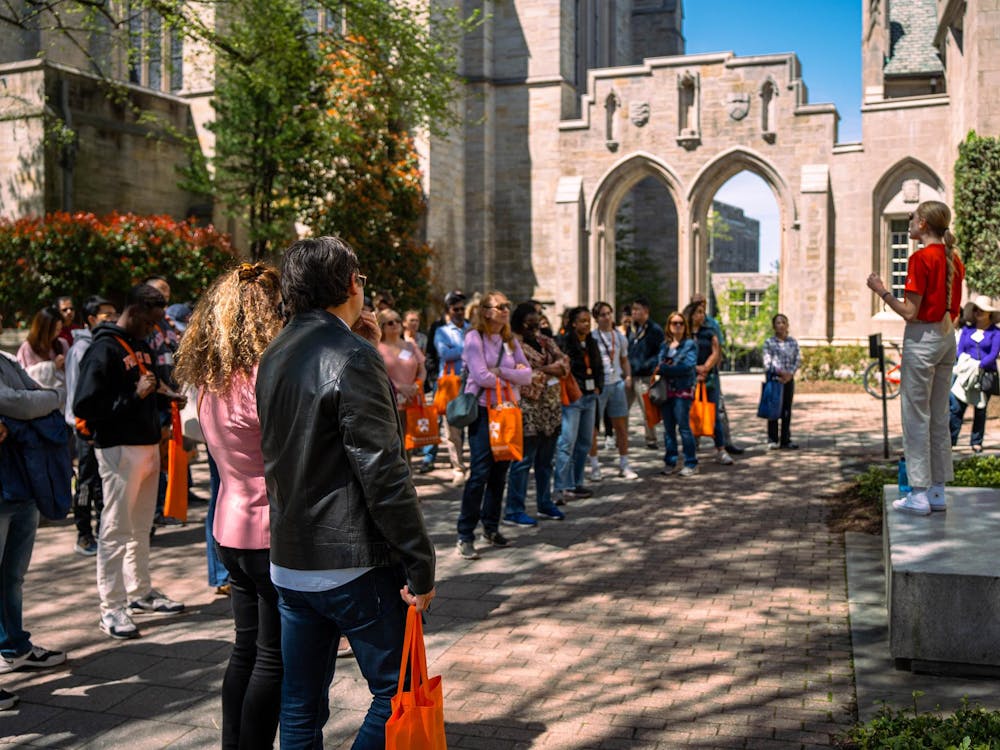Nathaniel Fisch, the director of the Princeton Program in Plasma Physics, and a team of researchers at the Princeton Plasma Physics Laboratory (PPPL) received $1,499,953 in funding on Feb. 14 from the United States Department of Energy’s Advanced Research Projects Agency–Energy (ARPA-E) for their project on refining an innovative form of fusion energy.
The research holds significant promise for the global effort to develop novel types of clean energy technologies.
Fusion energy is a type of nuclear reaction in which two light atomic nuclei combine and create a heavier nucleus. This class of reactions generate heat that can in turn be channeled to produce vast amounts of electricity. This innovative mode of energy production has typically revolved around the fusion reaction between two distinct forms of hydrogen: deuterium and tritium, or DT fusion. DT fusion produces energy harnessed by a tokamak, a donut-shaped magnetic device.
Fisch’s project, titled “Economical Proton-Boron11 Fusion,” optimizes fusion reactions, but with a novel spin. Instead of relying on the classic DT fusion reaction, his team’s project involves the fusion between a proton (a hydrogen atom nucleus) and a boron-11 nucleus, the latter of which is composed of five protons and six neutrons.
Protons and boron-11 particles are not only ubiquitous and affordable, but the fusion of the two particles — known as a pB11 reaction — generates energy without radioactive waste. This is at the core of what makes Fisch’s work so groundbreaking: Instead of generating radioactive waste, pB11 reactions yield energy in the form of alpha particles, or non-radioactive helium nuclei. In contrast, traditional modes of fusion energy — including DT reactions — produce ample amounts of radioactivity, which can exert detrimental effects on human health and the environment.
Despite the comparative advantages of pB11 reactions, the fusion of protons and boron-11 particles remains rife with challenges, primarily owing to the incredibly high temperatures necessary to execute the reaction. These reaction conditions can be induced under conditions of hundreds of millions of degrees which necessitate vast energy expenditures, according to Fisch.
“To release fusion energy, one needs to confine ions hot enough to undergo fusion for a time long enough to recoup the energy it took to heat them to high temperatures,” Fisch wrote in an email to The Daily Princetonian. “The pB11 reaction has a smaller cross section, so that means that it takes longer to recoup the invested energy, which means that you must confine them somehow for longer.”
“On top of that, if the ions are so hot, then the electrons will become similarly hot, which means they will radiate away in short wavelength light (X-rays) the energy that you are trying to confine,” Fisch wrote, emphasizing that the high temperatures carry their own set of challenges with respect to the preservation of the energy produced by pB11 reactions.
Fisch’s project aims to resolve this predicament by devising fusion reaction designs that minimize the energy losses associated with pB11 reaction conditions while seeking to amplify their reactivity.
For instance, the plasma in the tokamak could be rotated such that the boron-11 ions are confined at a considerable distance away from the lighter protons. This arrangement would enable only the most energetic protons to interact with boron. These circumstances would also provide a cooler environment for pB11 reactions, while reducing the radioactive loss of harvested energy and potentially paving the way toward a cost-efficient method of pB11 fusion.
Ian Ochs, a former Jacobus Fellow and a postdoctoral student on Fisch’s team, previously completed theoretical work for his thesis examining the fundamental theory of wave-particle applications in plasma. While his involvement with the pB11 enterprise may appear like a departure from his earlier work, Ochs explained that his particular area of expertise remains pertinent to the immediate goals of the project.
“[D]ealing with overall power balance in a reactor, I will soon be returning to the fundamental wave concepts developed in my thesis, since our reactor design actually does involve carefully controlling the rotation to leverage centrifugal forces, as well as using waves to manipulate the plasma species in other ways,” Ochs wrote in an email to the ‘Prince.’

Ochs and Fisch emphasized the importance of versatility and interdisciplinary collaboration when working toward realizing the pB11 project’s aims.
“I do think that one of the fun things about working in this field, particularly on an early-stage concept, is that you need to be comfortable working with a lot of different models and systems — so you are constantly learning new approaches and methods, and looking at new regimes,” wrote Ochs in an email to the ‘Prince.’
Fisch agreed with Ochs, elucidating key differences between DT and pB11 fusion that warrant an interdisciplinary approach.
“Compared to DT fusion, pB11 fusion introduces both very new physical effects to be exploited and very new engineering challenges to be met. The interdisciplinary challenges come particularly from the needs in harvesting efficiently the fusion output, which comes in the form of very hot plasma and very short wavelength light,” wrote Fisch.
This research holds much promise for the global search for cleaner and more sustainable energy alternatives.
Senior Strategic Advisor for Sustainability Science at PPPL Emily Carter said that “[f]usion power has the potential to provide stable electricity to power the world without the intermittency and land requirements of solar and wind farms, and it therefore is worth our investment,” according to a University press release from March 10, 2022.
Regardless of the promises of the pB11 project, Fisch posed some caveats about future applications of the project’s potential strides in controlling this type of fusion reaction.
“The pB11 reaction is a longshot. It is very attractive, but really a longshot,” Fisch wrote in an email to the ‘Prince.’
“There is not much likelihood that pB11 fusion reaction-powered clean energy will become a pivotal source of clean energy in the near-term future,” Fisch added. “However, developing commercial fusion through the leading approaches has proven to be not so easy or so quick either.”
In the meantime, his research group plans to continue making progress toward the goal of executing pB11 fusion reactions in an energy-efficient manner.
“On the time scale over which leading approaches to fusion energy might realize commercial deployment, there remains some opportunity for pB11 fusion to emerge as a disruptive technology,” he wrote.
Editor’s Note: This headline has been updated to more clearly indicate that the award was granted to Princeton University, not the PPPL.
Amy Ciceu is a senior writer who often covers research and COVID-19-related developments. She also serves as a Newsletter Editor. She can be reached at aciceu@princeton.edu.









